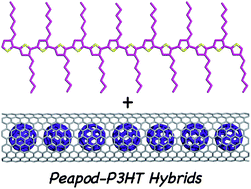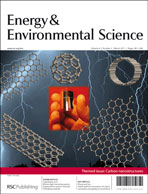Photophysics and photoelectrochemical properties of nanohybrids consisting of fullerene-encapsulated single-walled carbon nanotubes and poly(3-hexylthiophene)†
Abstract
Novel nanohybrids of

- This article is part of the themed collection: Carbon nanostructures

 Please wait while we load your content...
Please wait while we load your content...